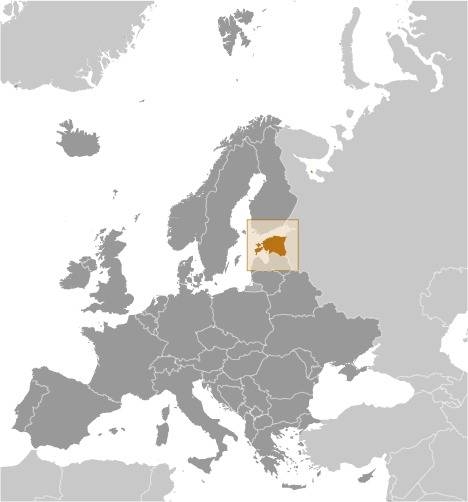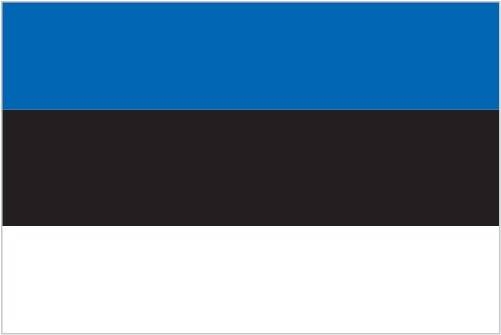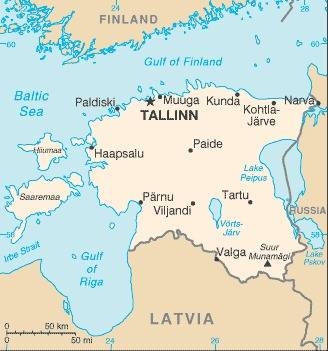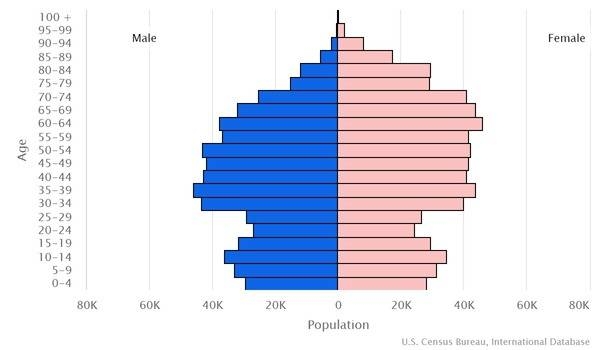Country Summary




Introduction
Background
After centuries of Danish, Swedish, German, and Russian rule, Estonia attained independence in 1918. Forcibly incorporated into the USSR in 1940, it regained its freedom in 1991 with the collapse of the Soviet Union.
Geography
Area
total: 45,228 sq km
land: 42,388 sq km
water: 2,840 sq km
Climate
maritime; wet, moderate winters, cool summers
Natural resources
oil shale, peat, rare earth elements, phosphorite, clay, limestone, sand, dolomite, arable land, sea mud
People and Society
Population
1,211,524 (2022 est.)
Ethnic groups
Estonian 68.7%, Russian 24.8%, Ukrainian 1.7%, Belarusian 1%, Finn 0.6%, other 1.6%, unspecified 1.6% (2011 est.)
Languages
Estonian (official) 68.5%, Russian 29.6%, Ukrainian 0.6%, other 1.2%, unspecified 0.1% (2011 est.)
Religions
Orthodox 16.2%, Lutheran 9.9%, other Christian (including Methodist, Seventh Day Adventist, Roman Catholic, Pentecostal) 2.2%, other 0.9%, none 54.1%, unspecified 16.7% (2011 est.)
Population growth rate
-0.71% (2022 est.)
Government
Government type
parliamentary republic
Capital
name: Tallinn
Executive branch
chief of state: President Alar KARIS (since 11 October 2021)
head of government: Prime Minister Kaja KALLAS (since 26 January 2021)
Legislative branch
description: unicameral Parliament or Riigikogu (101 seats; members directly elected in multi-seat constituencies by open- list proportional representation vote to serve 4-year terms)
Economy
Economic overview
advanced service-based EU and OECD economy; regional trade and telecommunications leader; recently rejected Baltic sea rail tunnel from Tallinn to Helsinki; flat income taxation; substantial welfare system; balanced budget culture; business-friendly climate
Real GDP (purchasing power parity)
$47.44 billion (2020 est.)
Real GDP per capita
$35,600 (2020 est.)
Agricultural products
wheat, milk, barley, rapeseed, rye, oats, peas, potatoes, pork, triticale
Industries
food, engineering, electronics, wood and wood products, textiles; information technology, telecommunications
Exports
$21.69 billion (2020 est.)
Exports - partners
Finland 13%, Sweden 9%, Latvia 8%, Russia 8%, United States 7%, Lithuania 6%, Germany 6% (2019)
Exports - commodities
broadcasting equipment, refined petroleum, coal tar oil, cars, prefabricated buildings (2019)
Imports
$21.73 billion (2020 est.)
Imports - partners
Russia 12%, Germany 10%, Finland 9%, Lithuania 7%, Latvia 7%, Sweden 6%, Poland 6%, China 6% (2019)
Imports - commodities
cars, refined petroleum, coal tar oil, broadcasting equipment, packaged medicines (2019)
Exchange rates
euros (EUR) per US dollar -
Page last updated: Wednesday, May 11, 2022
